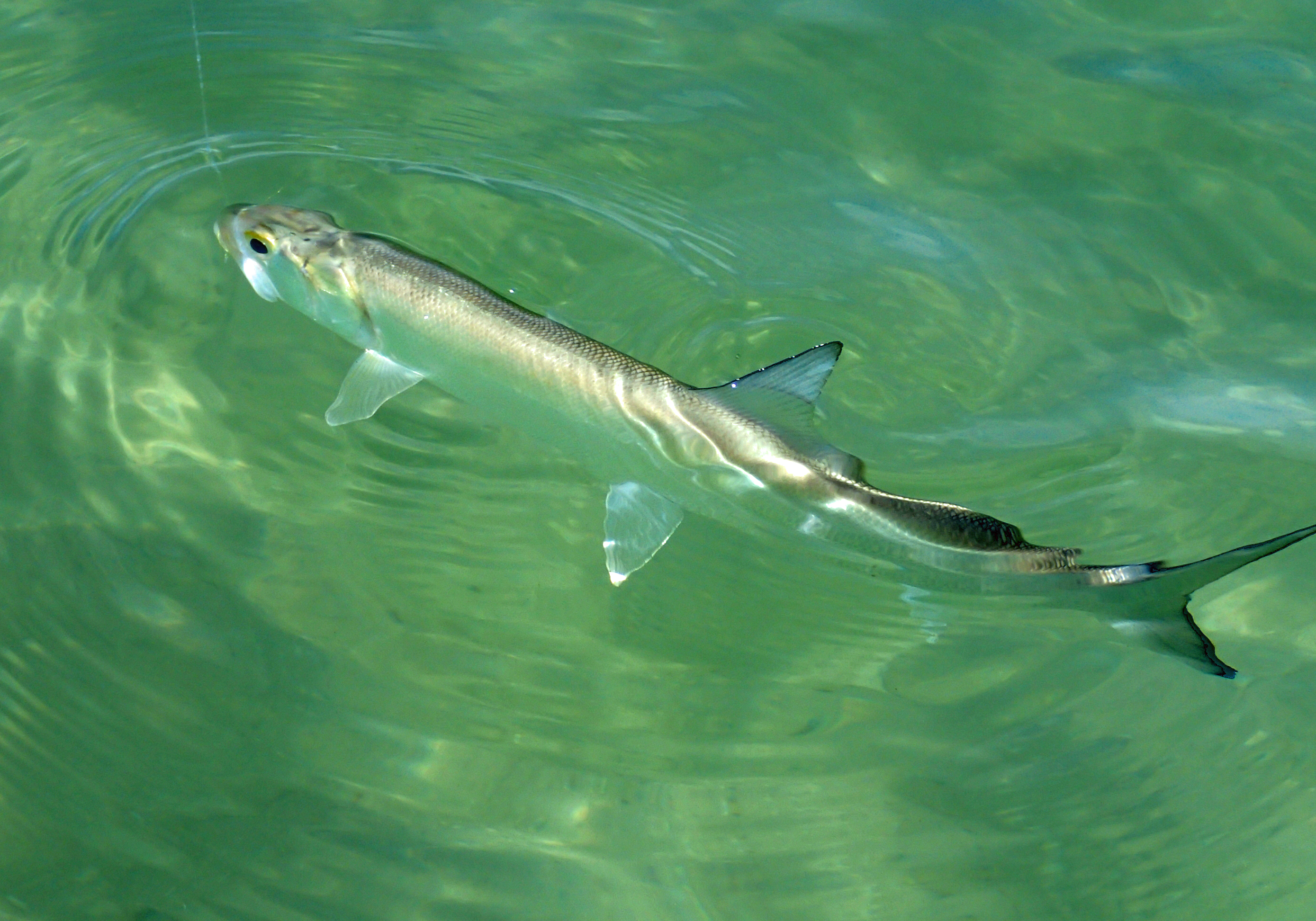Elops Saurus on:
[Wikipedia]
[Google]
[Amazon]
The ladyfish or tenpounder (''Elops saurus'') is a species of fish in the genus ''
 Like other species in its genus, the ladyfish has a long, slender, rounded body covered with silvery scales. Its mouth is terminal and the tail is deeply forked. The species can be distinguished by counting the number of gill rakers and vertebrae.
Like other species in its genus, the ladyfish has a long, slender, rounded body covered with silvery scales. Its mouth is terminal and the tail is deeply forked. The species can be distinguished by counting the number of gill rakers and vertebrae.
Elops
The Elopidae are a family (biology), family of ray-finned fish containing a single living genus ''Elops''. They are commonly known as ladyfish, skipjacks, jack-rashes, or tenpounders.
The ladyfish are a coastal-dwelling fish found throughout t ...
'', the only genus in the monotypic family Elopidae
The Elopidae are a family (biology), family of ray-finned fish containing a single living genus ''Elops''. They are commonly known as ladyfish, skipjacks, jack-rashes, or tenpounders.
The ladyfish are a coastal-dwelling fish found throughout t ...
.
Description
 Like other species in its genus, the ladyfish has a long, slender, rounded body covered with silvery scales. Its mouth is terminal and the tail is deeply forked. The species can be distinguished by counting the number of gill rakers and vertebrae.
Like other species in its genus, the ladyfish has a long, slender, rounded body covered with silvery scales. Its mouth is terminal and the tail is deeply forked. The species can be distinguished by counting the number of gill rakers and vertebrae.
Distribution
The ladyfish is distributed in the western North Atlantic Ocean fromNew England
New England is a region consisting of six states in the Northeastern United States: Connecticut, Maine, Massachusetts, New Hampshire, Rhode Island, and Vermont. It is bordered by the state of New York (state), New York to the west and by the ...
to Florida
Florida ( ; ) is a U.S. state, state in the Southeastern United States, Southeastern region of the United States. It borders the Gulf of Mexico to the west, Alabama to the northwest, Georgia (U.S. state), Georgia to the north, the Atlantic ...
, and the Gulf of Mexico
The Gulf of Mexico () is an oceanic basin and a marginal sea of the Atlantic Ocean, mostly surrounded by the North American continent. It is bounded on the northeast, north, and northwest by the Gulf Coast of the United States; on the southw ...
. Its distribution overlaps with the malacho ('' Elops smithi'') in the southeast US and the southern Gulf of Mexico.
Biology
Like other members of the Elopidae, the ladyfish is apelagic
The pelagic zone consists of the water column of the open ocean and can be further divided into regions by depth. The word ''pelagic'' is derived . The pelagic zone can be thought of as an imaginary cylinder or water column between the sur ...
fish that spawns in the sea, but little is known about this marine phase. The larvae, which are transparent and laterally compressed, are dispersed inshore and enter embayments, where they live for 2 to 3 yr. The juveniles are euryhaline, or tolerant to a wide range of salinity
Salinity () is the saltiness or amount of salt (chemistry), salt dissolved in a body of water, called saline water (see also soil salinity). It is usually measured in g/L or g/kg (grams of salt per liter/kilogram of water; the latter is dimensio ...
, so these embayments may be low-salinity estuaries
An estuary is a partially enclosed coastal body of brackish water with one or more rivers or streams flowing into it, and with a free connection to the open sea. Estuaries form a transition zone between river environments and maritime environm ...
or hypersaline lagoons. Subadults move into the lower reaches of the embayments, and upon maturation, proceed to offshore, marine habitats.
Threats
This species uses estuarine areas and hypersaline lagoons; changes in the quality of these habitats may affect this species' population dynamics. Although this species may not be closely associated with any single habitat, it may be adversely affected by development and urbanization.References
Elopidae Fish of the Eastern United States Fish of the Western Atlantic Fish described in 1766 Taxa named by Carl Linnaeus {{Elopiformes-stub